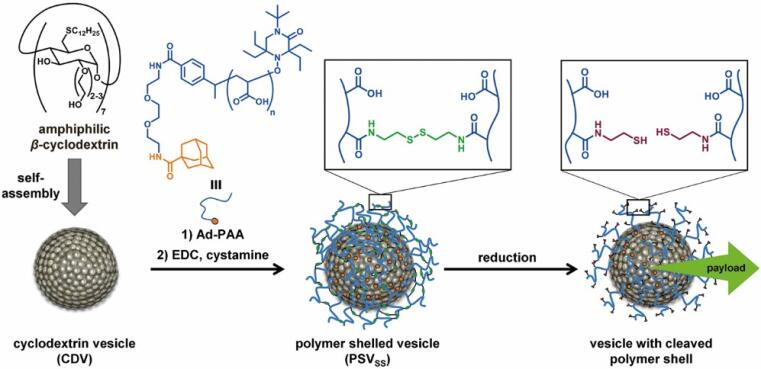Responsive nanocontainers, gels and surface coatings
The general objective of our research is to apply molecules as building blocks for the construction of soft materials and nanoscale structures by means of self-assembly. The formation of complex and dynamic superstructures based on small molecules as well as other nanoscale building blocks results in chemical systems featuring new properties that go beyond the simple sum of the single components.
In the field of responsive nanomaterials we investigate nanocontainers, gels and surface coatings. Nanocontainers are self-assembled in aqueous solution from amphiphilic cyclodextrins and functionalized by host-guest chemistry. We have shown that cylodextrin vesicles can be decorated with a cross-linked polymer shell to provide robust yet stimulus-responsive nanocontainers for intracellular delivery. Vesicles can also be incorporated as cross-links in hydrogels. Since the cross-links in such gels are dynamic, these gels are responsive and self-healing. In the area of functional surface coatings, we investigate polymer brushes for responsive surface adhesion. In this case, monomers featuring complementary covalent or non-covalent interaction motif lead to strong surface adhesion that can be released upon demand e.g. irradiation.


